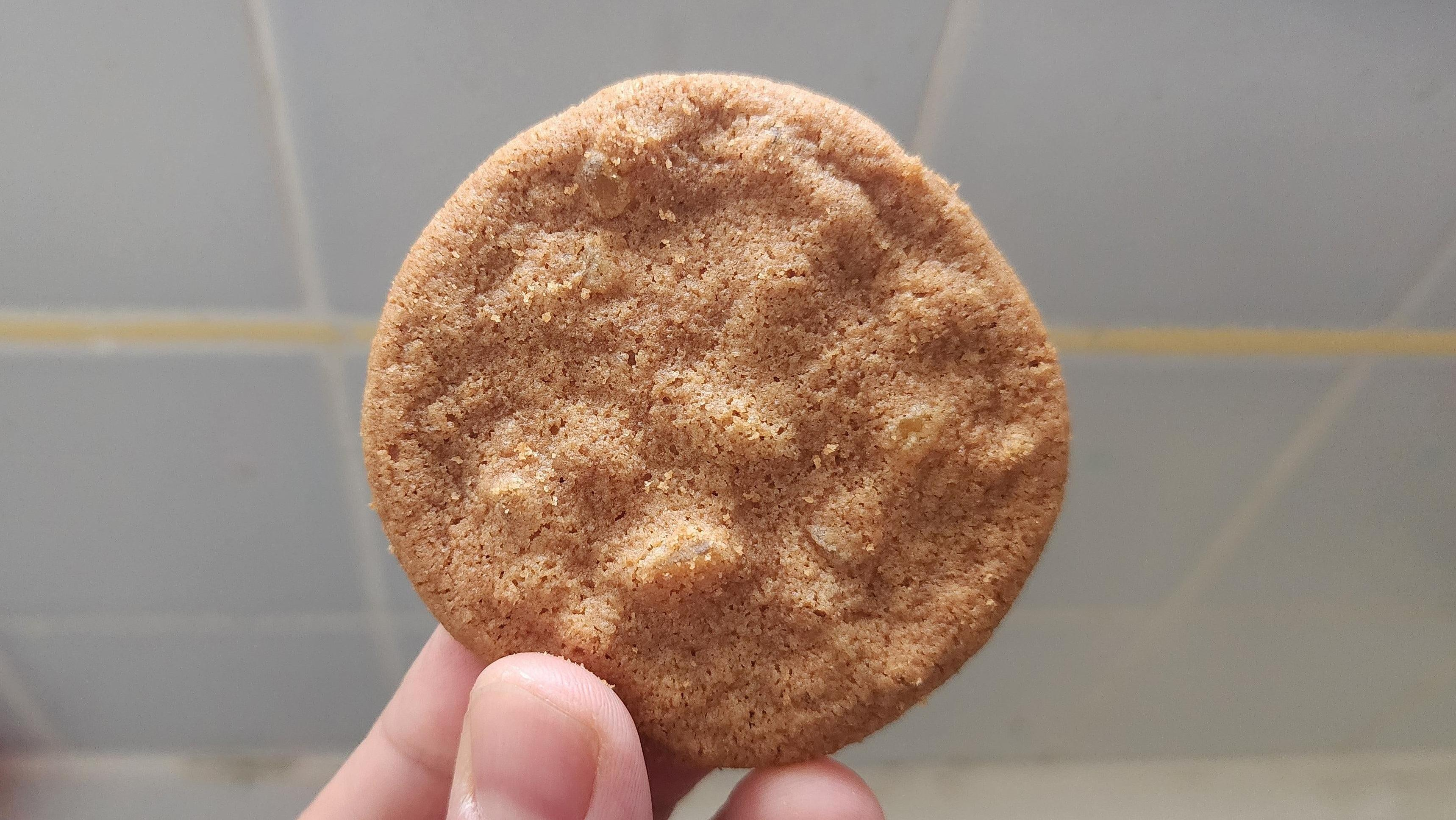What Makes Tate's Bake Shop Cookies So Good
Tate's crispy chocolate chip cookies are a combination of quality ingredients and technique.
Type "Why are Tate's cookies so good?" into Google and you'll also get results for "Why do people like Andrew Tate?" Both are huge, societal conundrums, but one thing is clear: Tate's Bake Shop cookies are preferred among shoppers. They consistently earn top marks in chocolate chip cookie rankings online, and the iconic green packaging is a mainstay in households across the country. But why are they so beloved? What makes these cookies so good?
Over at my last job as a staff writer for Sporked, I did a huge chocolate chip cookie taste test for which I drastically over-ordered and ran up the company budget (a habit I had at this job). I ended up having to taste 30+ brands of chocolate chip cookies and, no pun intended, things got a little stale. Chips Ahoy and Keebler Deluxe didn't pass the nostalgia test. Grandma's cookies are too dry, and most store-brand cookies are too soft. The outlier here is Pepperidge Farm, which provides the perfect non-crispy chocolate chip cookie for all those who prefer one.
Tate's Bake Shop, though, makes a consistently crispy, buttery, rich, and delicious cookie. There's almost a butterscotch note to these, and a deeper flavor than its competitors. In fact, the bakery is so good at this one thing that three Tate's products ended up in the top six: the Chocolate Chip Cookies, the Walnut Chocolate Chip Cookies, and the Gluten Free Chocolate Chip Cookies. I tasted them all once more to get a sense of why they're so good—and it all comes down to using great ingredients with precision.
Why everyone loves Tate’s Chocolate Chip Cookies
The Tate's Bake Shop website touts something called The Bake Shop Way, which isn't at all unlike the Artist's Way: Basically, bake cookies for 10,000 hours if you want to get good at it. But it's not just a lifelong baking habit that makes the cookies so good. Tate's uses ingredients that outshine those of most competitors in the space. As noted by this Serious Eats recipe for homemade copycat Tate's cookies:
"Unlike so many commercial cookies on the shelf, the ingredients listed on a package of Tate's chocolate chip cookies are as straightforward as they come: chocolate chips, flour, butter, cane sugar, brown cane sugar, eggs, baking soda, salt, and vanilla."
These are ingredients that any baker would have stocked in their cupboard. Meanwhile, here are the ingredients listed in Chips Ahoy: Unbleached Enriched Flour (Wheat Flour, Niacin, Reduced Iron, Thiamine Mononitrate {Vitamin B1}, Riboflavin {Vitamin B2}, Folic Acid), Semisweet Chocolate Chips (Sugar, Chocolate, Cocoa Butter, Dextrose, Milk, Soy Lecithin), Sugar, Canola Oil, Palm Oil, High Fructose Corn Syrup, Leavening (Baking Soda, Ammonium Phosphate), Salt, Natural And Artificial Flavor, Caramel Color.
Riboflavin, reduced iron, and palm oil are not exactly a pastry chef's go-to ingredients, yet you'll find an abundance of them all up and down the cookie aisle. Tate's, then, really fills an open space on the market, and its product tastes pretty damn close to homemade chocolate chip cookies. These are definitely on the crispier side (especially if you opt for the gluten-free cookies—more on that later), but regardless of whether you enjoy a crunchy cookie or a soft one, the quality ingredients are evident. And it's not just ingredients, but the technique, too.
As Serious Eats notes, thin, crispy, chewy, buttery cookies are all about ratios and ingredients. You actually want to limit gluten development for a tender crunch, not something that's going to shatter your damn teeth. That entails choosing the right type of flour, something low protein, but author Stella Parks notes that technique is also key: "By combining the flour and fat up front, the buttery coat creates a physical barrier between the flour proteins and water, slowing the process of hydration and thereby limiting the amount of gluten that can form."
We've covered gluten-free snacks before, and Tate's cookies have a similar, low-gluten texture. Though Tate's original chocolate chip cookie makes most best-of lists, my personal favorite is actually the gluten-free chocolate chip cookie. It's so unbelievably thin and crispy while also being rich and buttery—truly the best of both worlds, and an astonishing achievement to be had in a mass-produced grocery context. It just goes to show that gluten-free and low-gluten snacks continue to impress.
Okay, not everyone adores Tate’s crispy cookies
Tate's original cookies are notably crumbly, and the bottom of each cookie is even a little dark. Because of this, there's an extra nutty flavor. This is a flavor and texture that baker Stella Parks loves, but what about other professionals? I checked in with a baker here in Los Angeles, CJ Ballesteros, about his chocolate chip cookie preferences.
"I'm not a big fan of thin and crispy cookies," Ballesteros said. "If they get crumbled or used as an ice cream sando or something along those lines, I'm game. Crispy cookies with a coffee or other another component like ice cream or coffee is something I'm totally down with. However, straight-up chocolate chip cookies to me should have a decent amount of chew."
"I think there's something about a soft center that makes me think about eating a cookie straight from the oven that you're too excited to let cool," he added. "A lone crispy chocolate chip cookie sort of makes me think of rations." To Ballesteros, crispy cookies can give the impression of being stale or overbaked, too.
Tate's cookies don't have much chew, but their crunch is backed up by plenty of luxurious flavor. For many, it's the best of both worlds. For some, crispy cookies represent something a bit too boring.
"I mostly have memories of Tate's cookies from church food spreads," Ballesteros says. "Like, Sunday Methodist with hot chocolate cookies."
